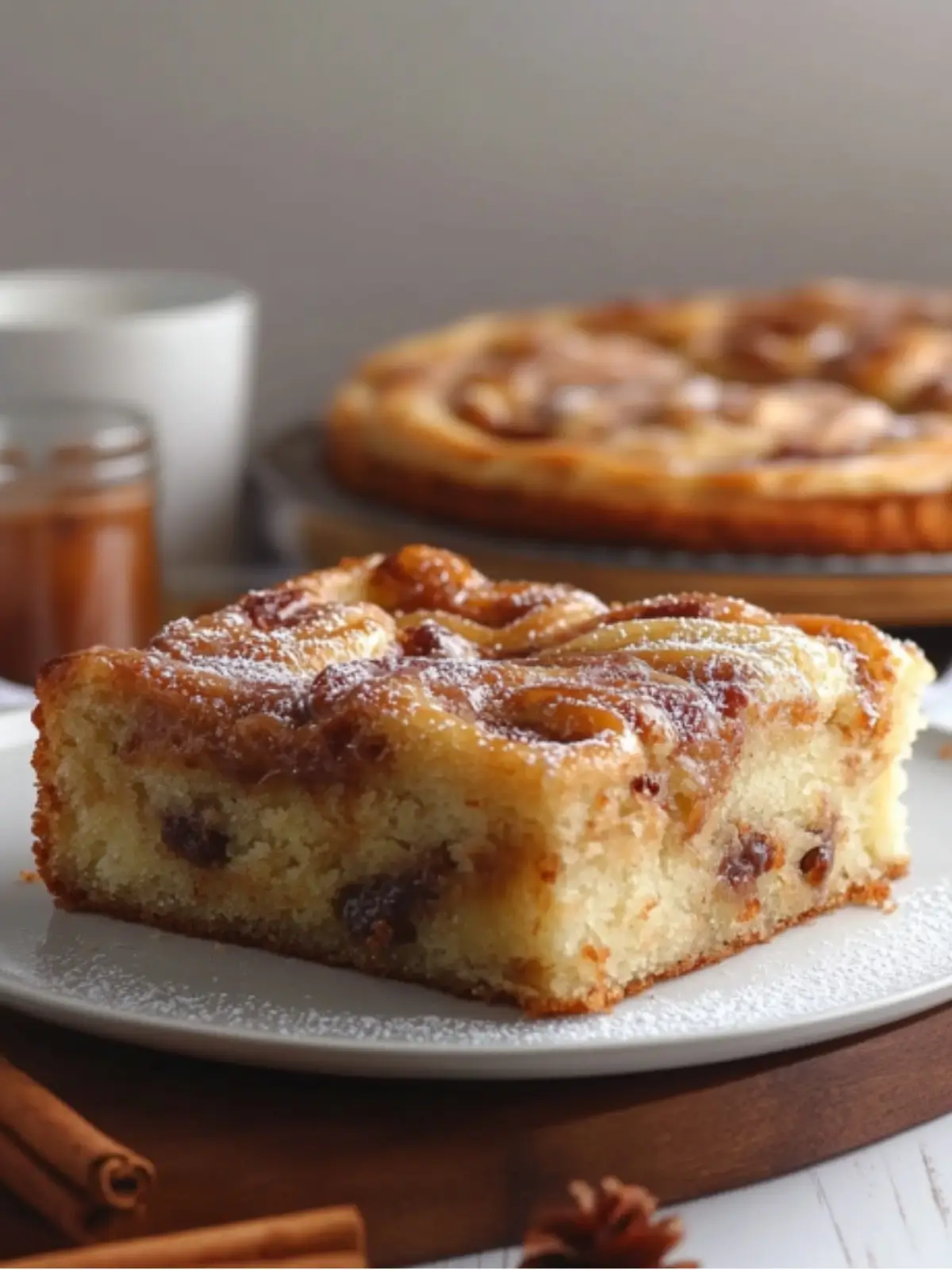Lemon Muffin Recipe: A Simple and Delicious Breakfast Treat
Lemon Muffins with their citrusy zing and sweet aroma, have become a beloved treat in many households. Often associated with cozy breakfasts and afternoon tea, these muffins offer a perfect balance of tangy and sweet flavors. Not only are they a delight to the taste buds, but they also bring a burst of sunshine to the table, making them ideal for both special occasions and everyday indulgence.
ADVERTISEMENT
In this comprehensive guide, we'll explore everything you need to know about making the perfect lemon muffin. From the essential ingredients to expert baking tips, and even creative variations, this article is your one-stop destination for mastering this classic pastry.
Essential Ingredients
When it comes to making delicious lemon muffins, there are a few essential ingredients that you'll need to have on hand. In this section, we'll go over the most important ingredients you'll need to make the perfect batch of lemon muffins.
Choosing the Best Lemons
The first ingredient you'll need to make lemon muffins is, of course, lemons. When choosing lemons for your muffins, it's important to pick ones that are ripe and juicy. Look for lemons that are heavy for their size and have a bright yellow color. Meyer lemons are a popular choice for lemon muffins, as they are sweeter and less acidic than regular lemons.
Flour Types and Their Effects
The type of flour you use in your muffins can have a big impact on their texture and flavor. All-purpose flour is a popular choice for muffins, as it produces a tender crumb and is readily available. However, you can also experiment with other types of flour, such as whole wheat flour or almond flour, to add more flavor and nutrition to your muffins.
Sweeteners and Alternatives
To sweeten your lemon muffins, you'll need to add sugar or another sweetener. Granulated sugar is the most common sweetener used in muffins, but you can also experiment with other sweeteners, such as honey, maple syrup, or agave nectar. If you're looking for a lower-calorie alternative, you can try using a sugar substitute like Stevia or Splenda. Just keep in mind that using a different sweetener may affect the texture and flavor of your muffins.
Equipment Needed
When making lemon muffins, there are a few essential tools that you'll need to have on hand. Here are the three main categories of equipment that you'll need:
Muffin Tins and Liners
The first thing you'll need is a muffin tin. You can use either a standard muffin tin or a mini muffin tin, depending on your preference. Make sure to choose a non-stick muffin tin or line the tin with muffin liners to prevent the muffins from sticking to the pan.
Mixing Tools
To mix the muffin batter, you'll need a few tools. A large mixing bowl is essential, as you'll be combining the wet and dry ingredients in this bowl. A whisk is also necessary to combine the ingredients thoroughly. If you prefer, you can use an electric mixer or a stand mixer to mix the ingredients, but a whisk works just as well.
Measuring Utensils
Accurate measurements are crucial when making muffins, so you'll need a few measuring utensils. You'll need measuring cups to measure the dry ingredients, such as flour and sugar. You'll also need measuring spoons to measure the baking powder, baking soda, and salt. Make sure to level off the ingredients with a knife to ensure accurate measurements.
Overall, with these three categories of essential equipment, you'll be well-equipped to make delicious lemon muffins.
Preparation Techniques
Zesting and Juicing Lemons
Before starting the recipe, it is important to zest and juice the lemons properly. Zesting is the process of removing the outermost layer of the lemon peel, which contains flavorful oils. A microplane grater is recommended for this task as it will produce fine zest. Be careful not to grate too deeply into the pith, which can add bitterness to the muffins.
Juicing the lemons is also crucial to the recipe. A handheld citrus juicer or a reamer can be used to extract the juice. Roll the lemons on a countertop before juicing to help release more juice. Strain the juice to remove any pulp or seeds that may have fallen in.
Mixing Methods
There are different mixing methods for making muffins. One method is the creaming method, which involves creaming butter and sugar together until light and fluffy. Eggs and other wet ingredients are then added, followed by the dry ingredients.
Another method is the muffin method, which involves whisking together the dry ingredients in one bowl and the wet ingredients in another. The wet ingredients are then added to the dry ingredients and mixed until just combined.
The method used will depend on the recipe and personal preference. However, it is important not to overmix the batter as this can lead to tough muffins. Mix until just combined and there are no dry pockets of flour left.
Muffin Batter Consistency
The consistency of the muffin batter is important for producing tender and moist muffins. The batter should be thick and scoopable, but not too thick that it is difficult to mix. If the batter is too thin, the muffins will be flat and dense. If the batter is too thick, the muffins will be dry and crumbly.
To achieve the right consistency, it is important to measure the ingredients accurately. Use a kitchen scale or measuring cups and spoons to ensure the correct amount of ingredients are used. If the batter is too thin, add a little more flour. If the batter is too thick, add a little more liquid, such as milk or yogurt.
By following these preparation techniques, the lemon muffins will turn out perfectly every time.
Baking Instructions
Oven Preheating
Before starting the baking process, it is important to preheat the oven to the correct temperature. Preheating the oven ensures that the muffins cook evenly and rise properly. For this recipe, preheat the oven to 425°F/225°C.
Baking Times and Temperatures
Once the oven is preheated, it's time to bake the muffins. First, divide the batter evenly between the muffin cups, filling them almost all the way to the top. Then, bake the muffins for 3 minutes at 425°F/225°C. After 3 minutes, reduce the oven temperature to 350°F/180°C and continue baking for an additional 12-17 minutes until a toothpick inserted into the center of the muffin comes out clean.
Testing for Doneness
To ensure that the muffins are fully baked, it's important to test for doneness. Insert a toothpick into the center of a muffin. If it comes out clean, the muffins are done. If there is batter or crumbs on the toothpick, continue baking for a few more minutes and test again. Once the muffins are fully baked, remove them from the oven and let them cool before glazing.
Overall, following these baking instructions will result in perfectly baked lemon muffins that are moist and delicious.
Serving Suggestions
Presentation Ideas
Lemon muffins are not only delicious but also visually appealing. They can be presented in various ways to make them look even more appetizing. Here are a few presentation ideas:
- Lemon Glaze: Drizzle the muffins with a simple lemon glaze made with powdered sugar and lemon juice. This will add a nice shine to the muffins and enhance the lemon flavor.
- Powdered Sugar: Dust the muffins with powdered sugar for a classic and elegant look. This is a great option if you want to keep things simple.
- Fresh Berries: Top the muffins with fresh berries such as raspberries, blueberries, or strawberries. This will add a pop of color and a touch of sweetness.
- Whipped Cream: Serve the muffins with a dollop of whipped cream and a sprinkle of lemon zest. This will make the muffins feel more like a dessert.
Pairing with Beverages
Lemon muffins go well with a variety of beverages. Here are a few suggestions:
- Coffee: A cup of coffee is a classic pairing with muffins. The bitterness of the coffee complements the sweetness of the muffins.
- Tea: Lemon muffins pair well with a variety of teas such as Earl Grey, English Breakfast, or Lemon Tea. The citrus flavor of the muffins will enhance the flavor of the tea.
- Milk: A glass of milk is a great option for those who prefer a non-caffeinated beverage. The milk will balance out the sweetness of the muffins.
- Juice: Lemon muffins pair well with a variety of juices such as orange juice, grapefruit juice, or lemonade. This will create a refreshing and citrusy combination.
Overall, there are many ways to serve and pair lemon muffins. The key is to be creative and experiment with different flavors and presentations.
Storage and Freshness
Lemon muffins are a delicious treat that can be enjoyed anytime, anywhere. However, to ensure that they stay fresh and tasty, proper storage is essential. In this section, we will discuss the best ways to store lemon muffins to maintain their freshness and flavor.
Storing Lemon Muffins
After baking, it is best to allow the muffins to cool completely before storing them. This prevents moisture from building up inside the container, which can cause the muffins to become soggy. Once cooled, wrap the muffins individually in plastic wrap or aluminum foil to keep them fresh. Alternatively, place the muffins in an airtight container.
Lemon muffins can be stored at room temperature for up to three days. However, if you live in a hot and humid climate, it is best to store them in the refrigerator to prevent spoilage. Muffins stored in the refrigerator can last up to a week.
Freezing and Thawing
If you want to store your lemon muffins for a longer period, freezing is the best option. To freeze, wrap the muffins tightly in plastic wrap or aluminum foil and place them in an airtight container. Alternatively, you can use a freezer bag.
Lemon muffins can be stored in the freezer for up to three months. When you're ready to enjoy them, remove them from the freezer and let them thaw at room temperature for a few hours. Alternatively, you can heat them in the microwave for a few seconds to warm them up.
To maintain the freshness and flavor of your lemon muffins, it is important to store them properly. Whether you choose to store them at room temperature, in the refrigerator, or in the freezer, following the guidelines outlined in this section will ensure that your muffins stay fresh and delicious.
Nutritional Information
Lemon muffins are a popular treat that can be enjoyed as a breakfast item or a dessert. While they may be delicious, it is important to be aware of their nutritional information to make informed choices. Here is a breakdown of the nutritional information for a typical lemon muffin:
Calories
On average, a single lemon muffin contains around 200-300 calories. The exact number of calories will depend on the recipe and the size of the muffin. To reduce the calorie count, you can try using alternative ingredients such as low-fat yogurt, applesauce, or almond flour.
Carbohydrates
Lemon muffins are typically high in carbohydrates due to the presence of flour and sugar. A single muffin can contain up to 40 grams of carbohydrates. To reduce the carb count, you can try using alternative flours such as coconut flour or almond flour.
Fat
Lemon muffins are not typically high in fat, with most recipes containing less than 10 grams of fat per muffin. To reduce the fat content, you can try using low-fat yogurt or reducing the amount of butter or oil in the recipe.
Protein
Lemon muffins are not a significant source of protein, with most recipes containing only 2-3 grams of protein per muffin. To increase the protein content, you can try adding protein powder or using Greek yogurt instead of regular yogurt.
Overall, while lemon muffins may be a tasty treat, they should be enjoyed in moderation due to their high calorie and carbohydrate content. By making some simple substitutions and modifications to the recipe, you can enjoy a healthier version of this classic treat.
Variations and Substitutions
When it comes to making lemon muffins, there are many variations and substitutions that can be made to suit different dietary needs and preferences. Here are some suggestions:
Gluten-Free Options
For those who are gluten intolerant or have celiac disease, there are several gluten-free flour options that can be used in place of wheat flour. Some popular options include:
- Almond flour: This flour is made from ground almonds and has a slightly nutty flavor. It is a good choice for those who are looking for a low-carbohydrate option.
- Coconut flour: Made from ground coconut meat, this flour has a slightly sweet taste and is high in fiber.
- Oat flour: Made from ground oats, this flour is a good choice for those who are looking for a whole-grain option.
When substituting gluten-free flour for wheat flour in a recipe, it is important to use a gluten-free baking powder as well.
Vegan Alternatives
For those who follow a vegan diet, there are several substitutions that can be made to make lemon muffins vegan-friendly. Here are some suggestions:
- Use a plant-based milk such as almond milk or soy milk in place of cow's milk.
- Use a vegan butter substitute in place of butter.
- Use a flax egg (1 tablespoon ground flaxseed mixed with 3 tablespoons water) in place of a regular egg.
When making vegan substitutions, it is important to ensure that all ingredients are vegan-friendly, including any toppings or glazes used on the muffins.
Overall, making variations and substitutions to a lemon muffin recipe can be a fun way to experiment with different flavors and dietary needs. With a little creativity, anyone can enjoy a delicious and customized lemon muffin.
Frequently Asked Questions
What is the secret to moist muffins?
The secret to moist muffins is to add a wet ingredient to the batter. This could be yogurt, sour cream, or buttermilk. These ingredients add moisture to the batter, making the muffins tender and moist. Another important factor is not to overmix the batter, as this can cause the muffins to become tough and dry.
What is the secret to high muffins?
The secret to high muffins is to not overmix the batter. Overmixing can cause the gluten in the flour to develop, resulting in tough, dense muffins. Another important factor is to fill the muffin cups to about ⅔ full. This allows the muffins to rise and expand in the oven, resulting in tall, fluffy muffins.
How do you keep muffins moist and fluffy?
To keep muffins moist and fluffy, store them in an airtight container at room temperature. If you are storing them for more than a day, you can also freeze them in an airtight container or freezer bag. When you are ready to eat them, let them thaw at room temperature or reheat them in the oven or microwave.
What can I do with a lot of lemons?
If you have a lot of lemons, you can make lemonade, lemon bars, lemon curd, or lemon muffins! Lemon muffins are a delicious way to use up lemons and are perfect for breakfast or a snack. You can also use lemon zest and juice to add flavor to other baked goods or savory dishes.





Leave a Reply